Ruggable is a popular brand known for its stylish and washable rugs. As more people become environmentally conscious, the demand for non-toxic and sustainable products has increased. This brings up an important question - are Ruggable rugs non-toxic?
In this article, we will explore the materials used in Ruggable rugs and their potential impact on our health and the environment. We will also discuss why choosing non-toxic products is important and alternatives for those looking for more environmentally friendly options.
Why Non-Toxic Products Matter
The use of non-toxic products in our homes is important for several reasons. First and foremost, it protects our health and that of our loved ones.
Many traditional cleaning and household products contain harmful chemicals that can cause respiratory problems, skin irritations, allergies, and other health issues. By using non-toxic products like Ruggable Rugs, we can reduce our exposure to these harmful substances.
In addition to personal health benefits, choosing non-toxic products also has a positive impact on the environment. Traditional cleaning and household products often contain chemicals that are harmful to aquatic life and can contribute to air pollution. By opting for non-toxic alternatives, we help reduce these negative impacts on our planet.
Factors that make Ruggable rugs non-toxic
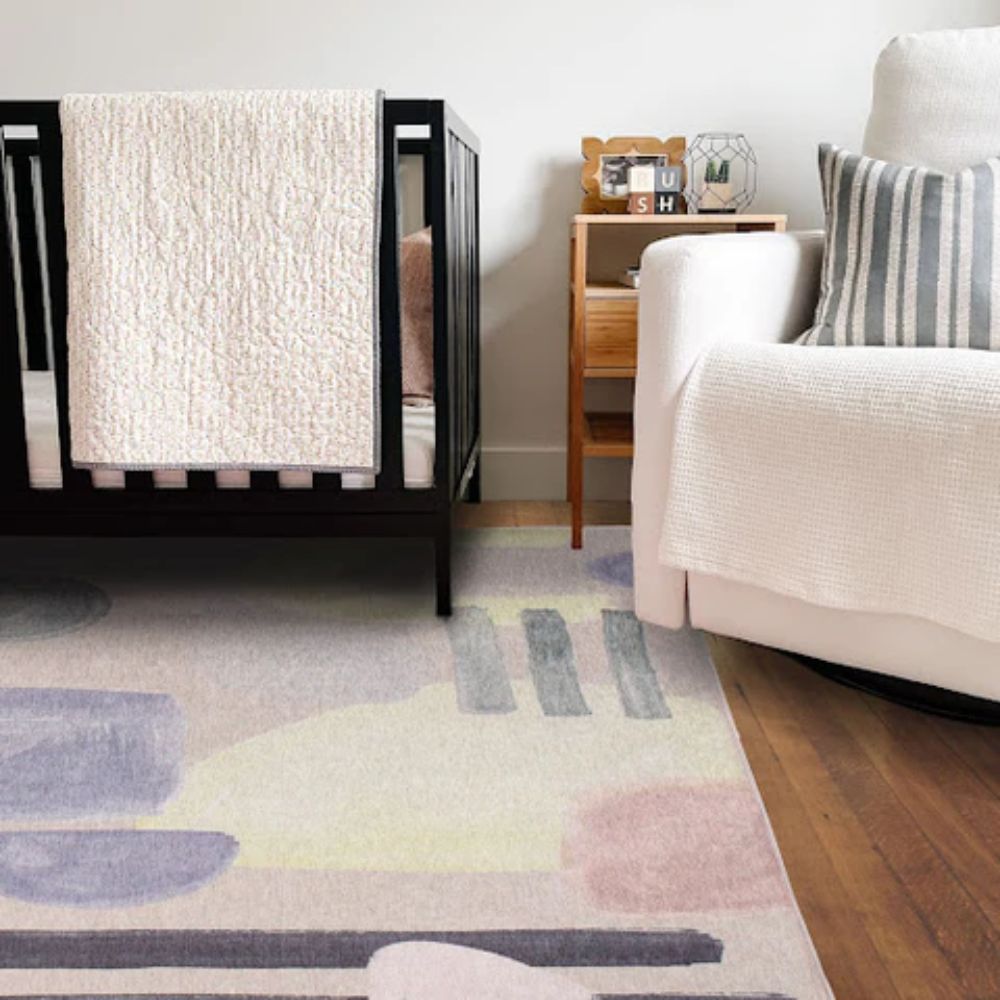
There are several factors that make Ruggable rugs a non-toxic option for your home. Here are some key points to consider:
Materials Used
Ruggable rugs are crafted from high-quality, non-toxic materials, including polyester and polyurethane, which are known for their durability and safety.
The top layer of the rug, made from polyester, is stain-resistant and easy to clean, making it ideal for households with children and pets.
Meanwhile, the polyurethane non-slip pad provides a firm grip, ensuring safety by preventing tripping hazards.
These materials are free from harmful chemicals such as phthalates, formaldehyde, and lead, ensuring that the rugs are safe for indoor use. By using these materials, Ruggable ensures that its products remain both functional and non-toxic.
Non-Slip Pad
The non-slip pad designed by Ruggable is not only functional but also an integral part of their non-toxic claim.
This pad is crafted from thermoplastic resin, a material recognized for being free of harmful substances such as formaldehyde and phthalates. Its design provides a secure grip on various floor surfaces, ensuring that the rug does not slide or bunch up, which is crucial for preventing slips and falls.
The material’s durability means it can withstand numerous wash cycles, prolonging the lifespan of the rug without compromising on safety or comfort, thus offering peace of mind.
Dyeing Process
Ruggable is revolutionizing rug dyeing with an eco-friendly process that cuts out the harsh chemicals you’d find in traditional methods. This approach ensures your rugs not only pop with vibrant, long-lasting colors but are also safe for your home.
The secret? Water-based dyes are free from toxins like heavy metals and azo dyes, which can be harmful to both humans and the environment.
With Ruggable's commitment to safe dyeing practices, their rugs are perfect for households with sensitive members, reducing the risk of allergic reactions or skin irritations.
Certifications and Testing
Ruggable rugs have undergone rigorous testing and have received various certifications to validate their non-toxic claims.
These certifications, such as the OEKO-TEX Standard 100, ensure that the materials used in the rugs are free from harmful chemicals and safe for human use. Additional testing by independent laboratories confirms the absence of toxic substances, such as VOCs, heavy metals, and allergens, further reinforcing their safety profile.
By showcasing these certifications, Ruggable provides customers with confidence in the safety of their products, reassuring them that they are making a health-conscious choice for their homes.
Washable Design
One of the most appealing features of Ruggable Rugs is their washable design, which contributes significantly to their non-toxic characteristics.
The ability to easily wash the rugs at home with mild detergents reduces the need for harsh cleaning chemicals that can leave toxic residues.
This design not only simplifies the cleaning process but also ensures that the rugs remain free of allergens, dust mites, and bacteria, promoting a healthier living environment. By opting for materials that withstand regular washing, Ruggable ensures that their rugs remain both hygienic and safe for families over time.
So these are the factors that make Ruggable rugs non-toxic and a suitable choice for those looking for safer alternatives for their homes.
Are Ruggable Rugs Non Toxic?
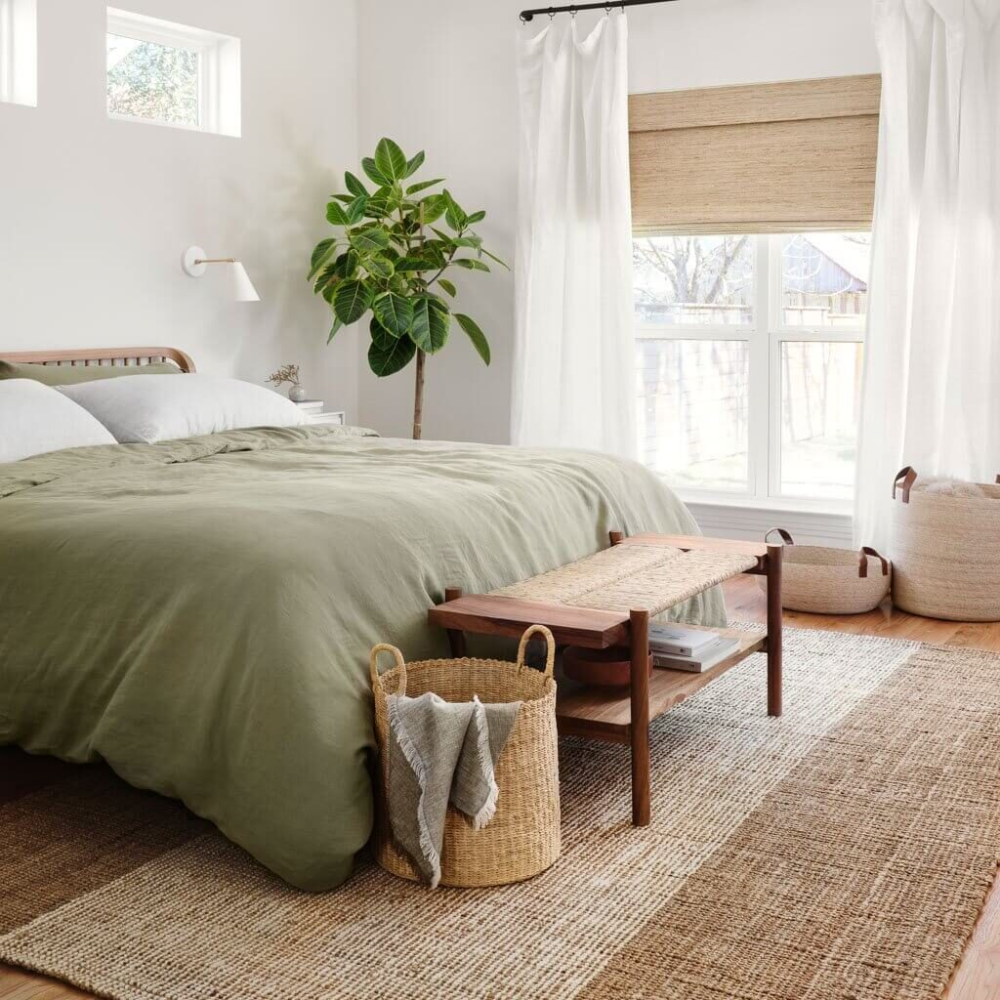
Based on the materials used, certifications received, and testing conducted, it is safe to say that Ruggable rugs are indeed non-toxic. The brand takes careful measures in selecting materials and processes for its products to ensure they are safe for both consumers and the environment.
Moreover, Ruggable’s commitment to sustainability further solidifies its position as a responsible brand that values the health of its customers and our planet.
With Ruggable rugs, you can have peace of mind knowing that your home is adorned with stylish and functional pieces that are also good for your health and the environment.
How to Incorporate Non-Toxic Products in Your Home
Besides Ruggable Rugs, there are many other non-toxic household product options available on the market. Here are some tips for incorporating these products into your home:
- Do your research: When purchasing household products, be sure to read labels and do your research on the brand's practices and ingredients. Also, look for certifications and testing reports to ensure the product is non-toxic.
- Choose natural ingredients: Look for products made from natural ingredients, such as plant-based cleaning agents and essential oils. These options are not only non-toxic but also have added benefits for your health and the environment.
- DIY it: Consider making your own cleaning products using simple and safe ingredients like vinegar, baking soda, and lemon juice. This not only reduces exposure to harmful chemicals but can also be cost-effective.
- Invest in reusable products: Instead of disposable alternatives, opt for reusable items such as cloth napkins, beeswax wraps, and glass food containers. These choices are better for both your health and the environment.
By incorporating non-toxic products in your home, you not only promote a healthier lifestyle for yourself and your family but also support brands that prioritize sustainability and ethical practices.
What Are the Benefits of Using Non-Toxic Products?
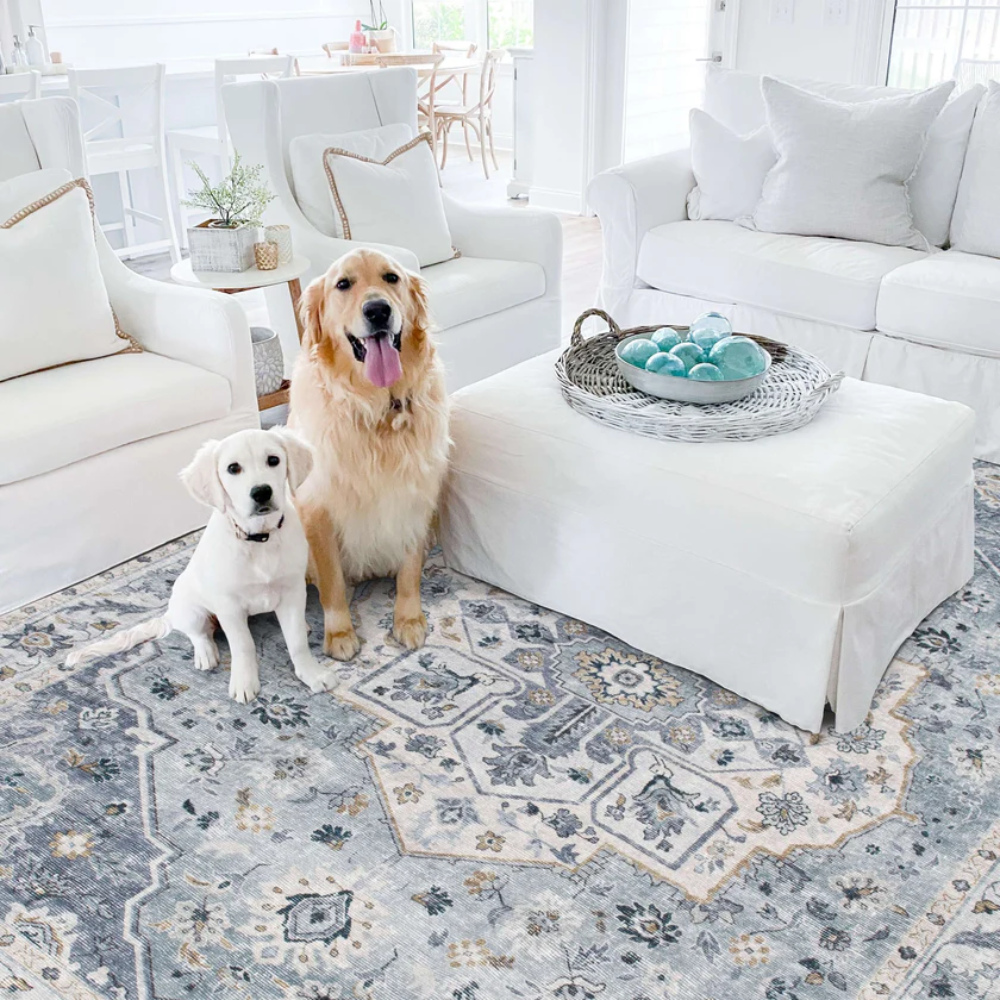
Aside from the obvious health benefits, using non-toxic products also has many other advantages:
- Eco-friendly: Non-toxic products are better for the environment as they do not release harmful substances into the air or water during production or use. They can also be easily disposed of without causing harm to the ecosystem.
- Reduced risk of allergies and illnesses: Harsh chemicals found in traditional household products can cause skin irritation, respiratory issues, and allergic reactions. By switching to non-toxic options, you decrease exposure to these irritants and reduce your risk of related health problems.
- Better for children and pets: Children and pets are more vulnerable to harsh chemicals due to their smaller size and lower body weight. Using non-toxic products can help create a safer environment for them to live and play in.
- Long-term cost savings: While non-toxic products may have a slightly higher upfront cost, they are often more concentrated and require less frequent use compared to traditional alternatives. This results in long-term cost savings over time.
By choosing non-toxic products, you not only prioritize your health but also contribute to the well-being of our planet. With brands like Ruggable leading the way in sustainable and non-toxic options, it's easier than ever to make eco-friendly choices for your home.
Are There Any Drawbacks to Non-Toxic Products?
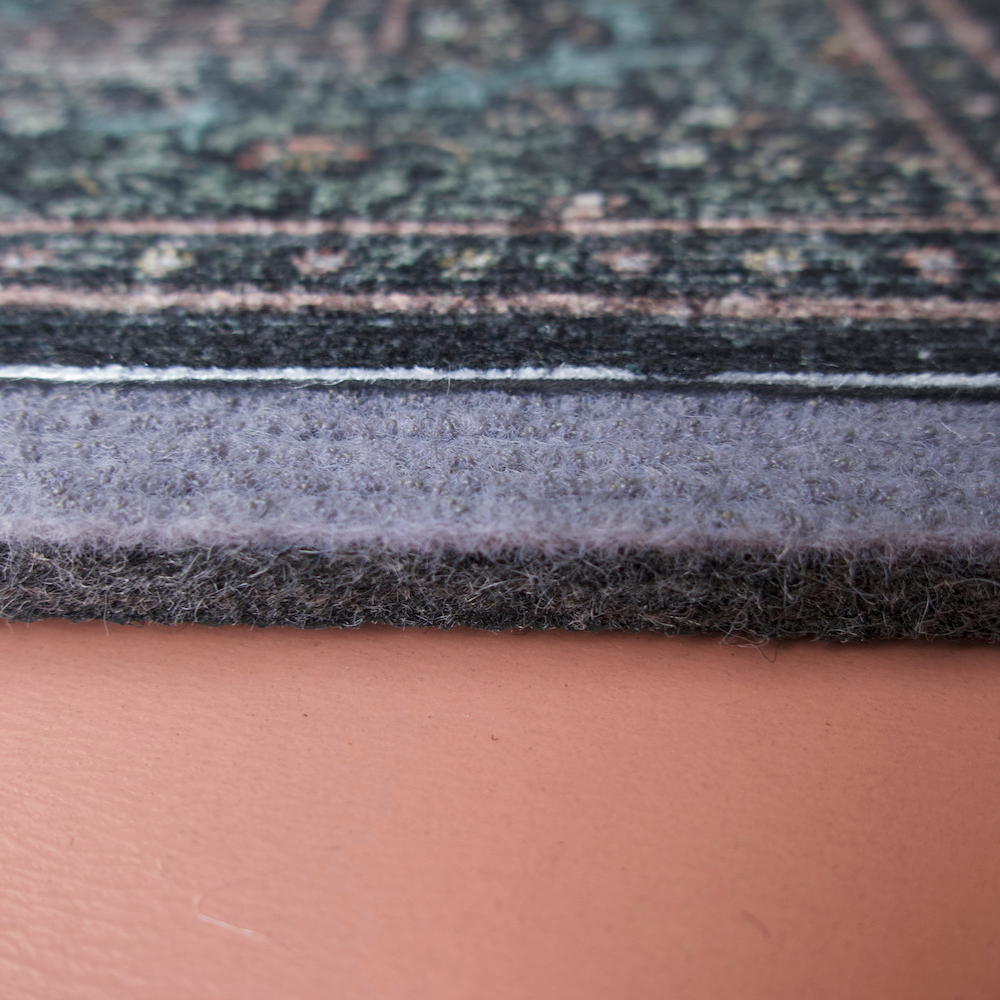
While there are many benefits to using non-toxic products, they may not be suitable for everyone. Some potential drawbacks include:
- Higher upfront cost: Non-toxic products may have a slightly higher price tag compared to traditional alternatives due to the use of natural and sustainable materials.
- Limited availability: Non-toxic products may not be as readily available in stores, depending on your location. However, options are increasing as demand for these products grows.
- Less effective: Some non-toxic products may not perform as effectively as their chemical-filled counterparts, especially when it comes to heavy-duty cleaning tasks. However, with regular use and proper techniques, non-toxic options can provide satisfactory results.
- Shorter shelf life: Natural ingredients and the absence of harsh preservatives can result in a shorter shelf life for non-toxic products compared to traditional alternatives. It's essential to use them within the recommended timeframe.
The benefits of using non-toxic products far outweigh any potential drawbacks. By being mindful of your choices and doing your research, you can find suitable options that align with your values and contribute to a healthier and more sustainable lifestyle.
FAQs
Are Ruggable rugs considered non toxic rugs?
Yes, Ruggable rugs are designed to be non toxic rugs, ensuring safety for your home environment. The materials used in the rug cover and rug pads are carefully selected to be free from harmful chemicals, providing peace of mind for families and pet owners.
How do Ruggable rug pads compare to those of synthetic rugs?
Ruggable rug pads are crafted with attention to safety and comfort, unlike some synthetic rugs that may contain chemical additives. Ruggable focuses on non-toxic materials for its rug pad, offering a safer alternative for your flooring needs.
Are there Ruggable options similar to wool rugs or natural fiber rugs?
While Ruggable rugs primarily use synthetic materials for ease of maintenance, they offer designs reminiscent of wool rugs and natural fiber rugs. These options provide the aesthetic appeal of traditional materials while maintaining the practical benefits of a Ruggable rug.
Can Ruggable rugs be an alternative to vintage rugs or Persian rugs?
Ruggable rugs can mimic the intricate designs of vintage rugs and Persian rugs, offering similar visual appeal with the added advantage of being non-toxic and easy to clean. This makes them a practical choice for those who appreciate classic designs but prefer modern convenience.
How do Ruggable rugs incorporate natural fibers or a hemp mix rugs look?
Ruggable rugs are primarily made of synthetic fibers, but they offer designs that emulate the look of natural fibers and hemp mix rugs. These designs provide a natural aesthetic while ensuring the rugs remain easy to maintain and non-toxic.
Are there organic rugs or undyed natural wool options in Ruggable's range?
Ruggable does not specifically offer organic rugs or undyed natural wool rugs, as their focus is on synthetic materials that ensure durability and washability. However, their designs often feature the classic appeal associated with these natural materials, combining style with practicality.
Are Ruggable rugs non-toxic like yoga mats and safe compared to polypropylene rugs?
Yes, Ruggable rugs are designed to be non-toxic, similar to the safety standards you would expect from yoga mats. While Ruggable rugs use synthetic materials, including those found in polypropylene rugs, they are crafted to ensure a safe and toxin-free environment in your home.
Conclusion
In conclusion, Ruggable rugs are a non-toxic and sustainable choice for your home. They prioritize safe materials and processes to ensure their products are not only stylish but also environmentally friendly.
Incorporating non-toxic products into your home can have numerous benefits, including promoting a healthier lifestyle, supporting eco-friendly practices, and contributing to long-term cost savings.
While there may be some drawbacks, they can easily be overcome with proper research and usage techniques. With the increasing availability of non-toxic options on the market, it's easier than ever to make conscious choices for our homes and the planet.
Subscribe to our email newsletter and unlock access to members-only content and exclusive updates.
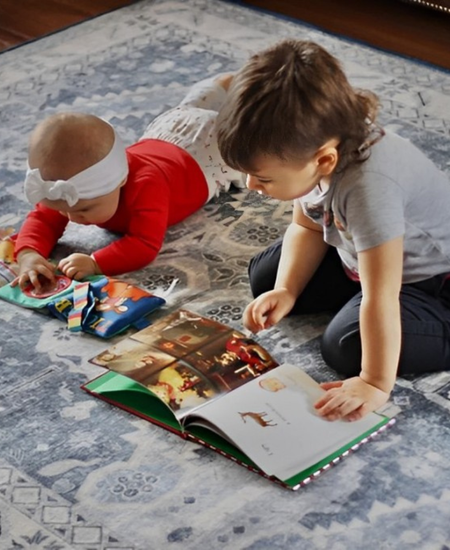
Comments